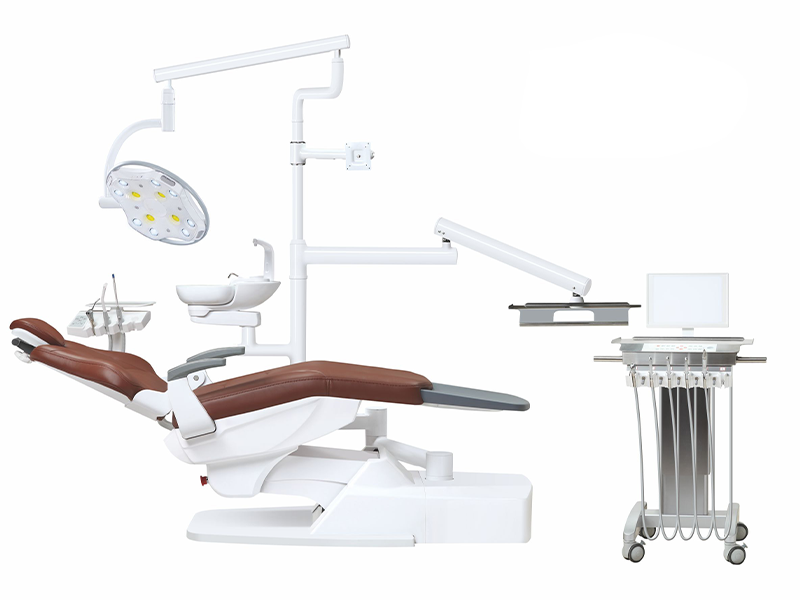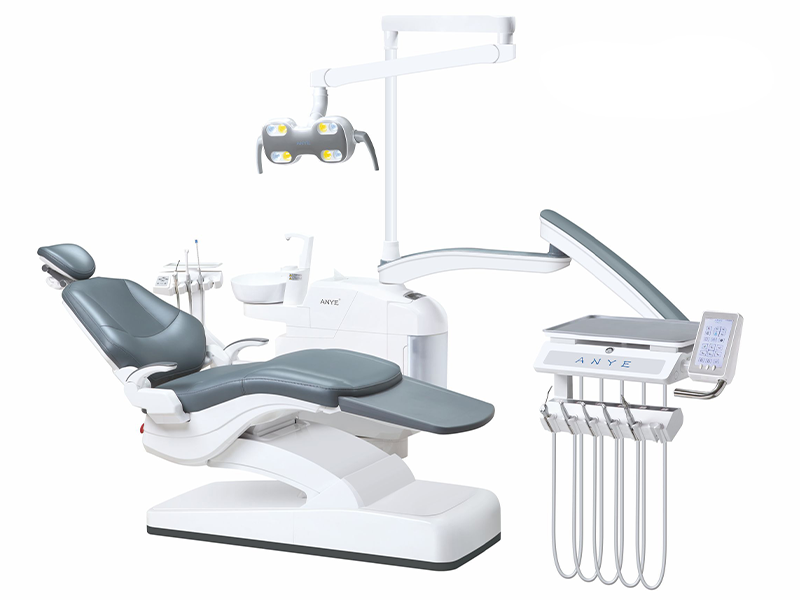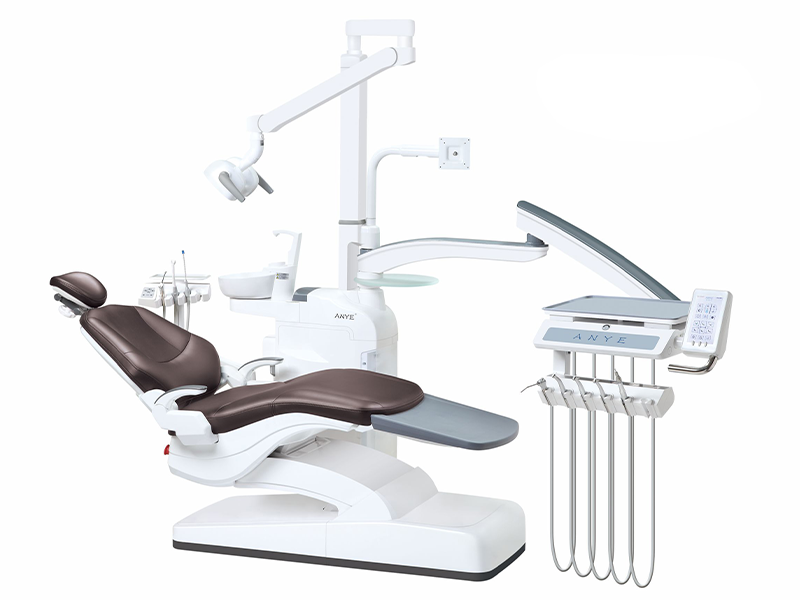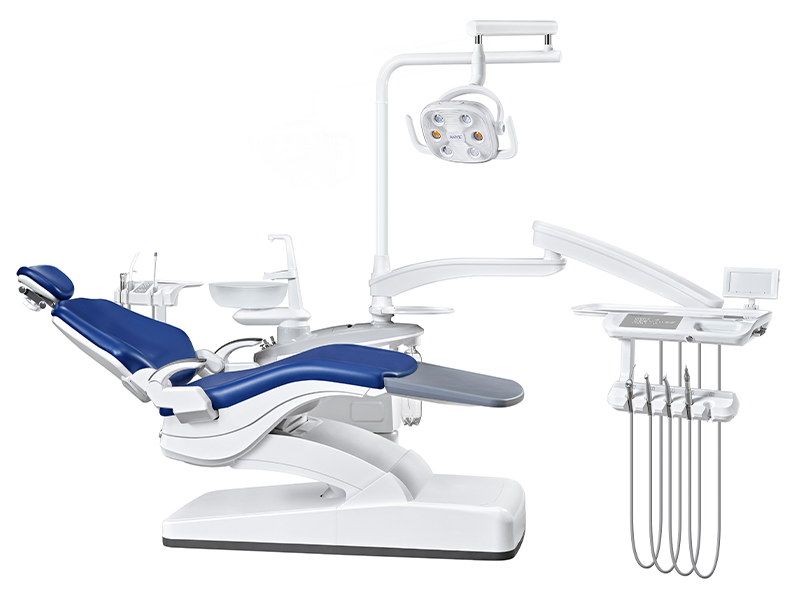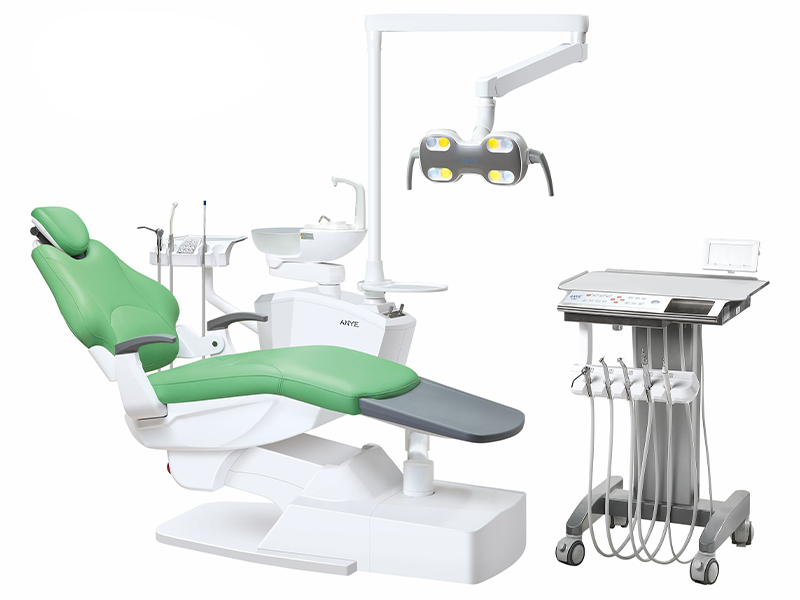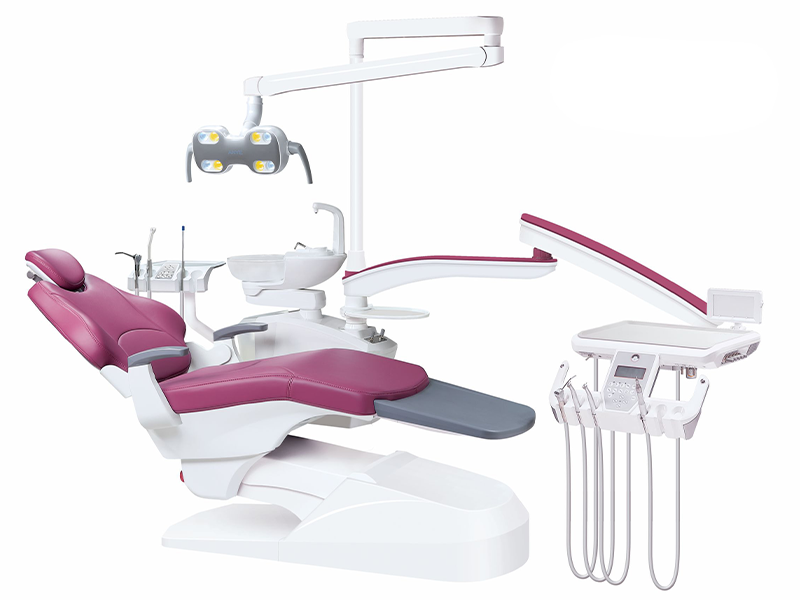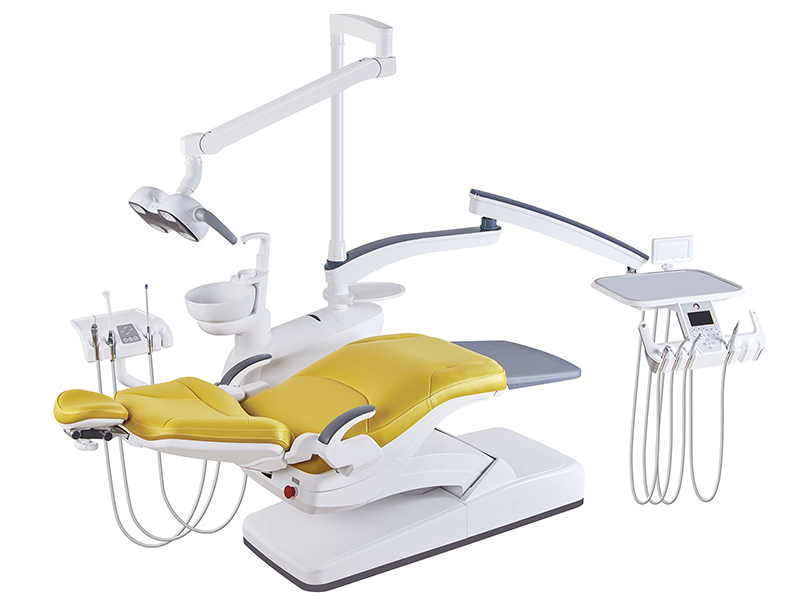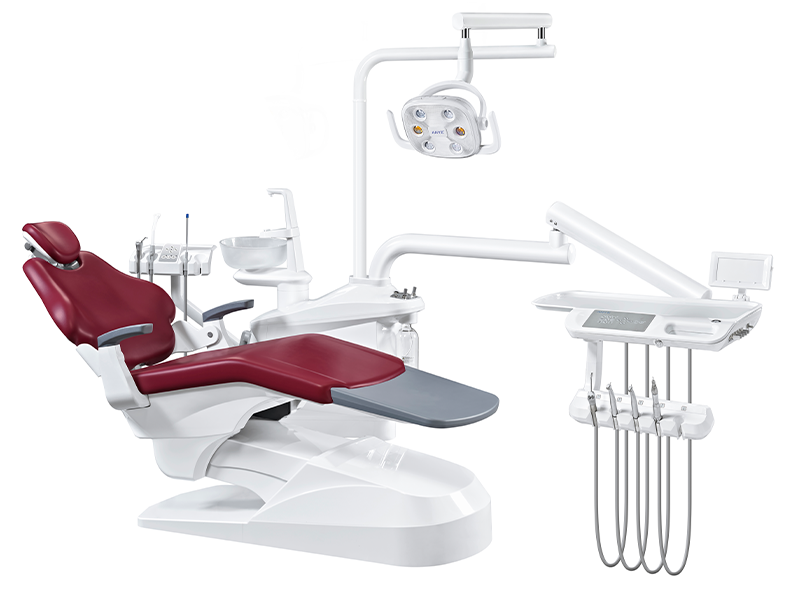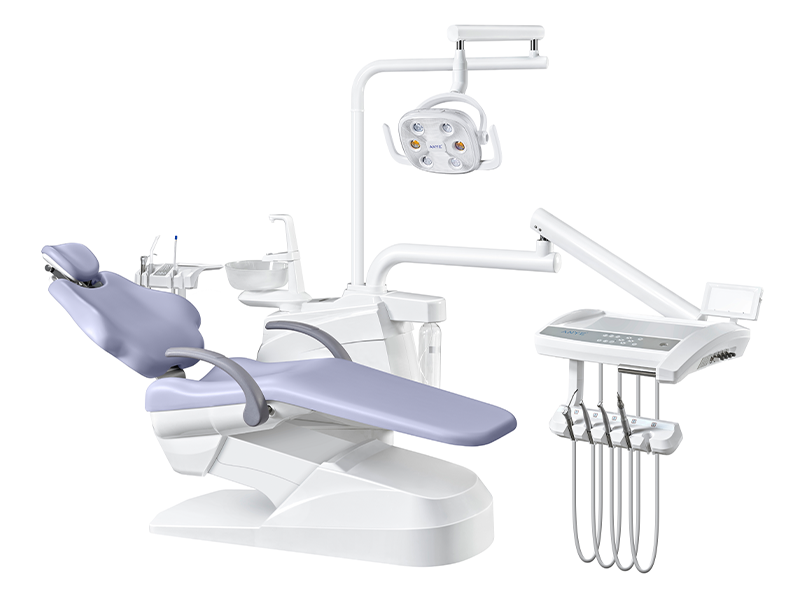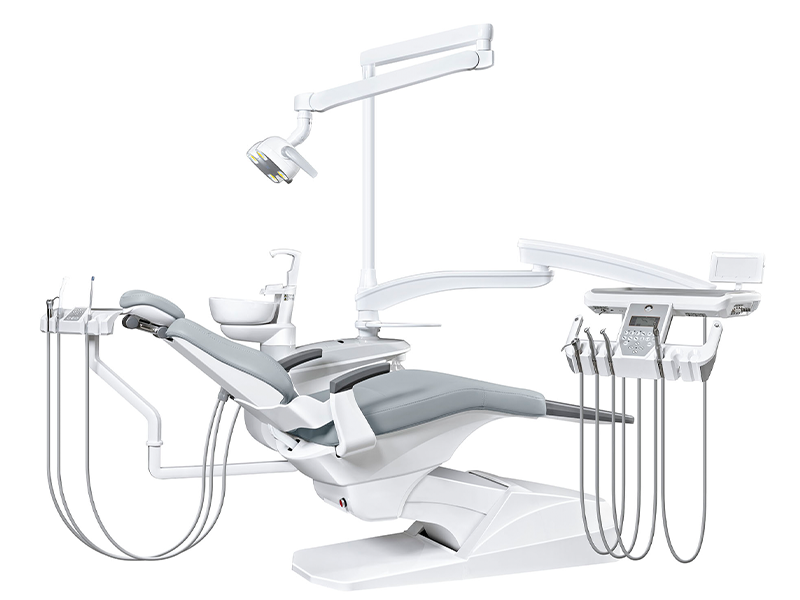Keeping your dental chair clean and disinfected is essential—not only for regulatory compliance but also for patient safety and equipment longevity. Did you know that 90% of cross-contamination in dental settings can be prevented with proper disinfection protocols? By following the steps in this guide—daily cleaning with mild detergents, using EPA-registered disinfectants, and implementing barrier protection—you can create a hygienic environment that safeguards both patients and staff.
At Anye Dental, we understand the importance of maintaining a sterile practice. That’s why we offer state-of-the-art dental chairs designed with hygiene in mind, such as our AY-215A1 Implant Dental Unit and AY-215B5 Disinfection Dental Unit. Ready to elevate your practice? Explore our range of innovative dental solutions and discover how we can help you achieve the highest standards of care.
Step-by-Step Guide to Disinfecting a Dental Chair
Step 1: Start with Manufacturer Guidelines
Proper dental chair disinfection begins with consulting the manufacturer’s cleaning instructions. These guidelines specify the recommended cleansers, cleaning frequency, and methods to ensure effective disinfection while prolonging the chair’s lifespan. Following these instructions helps maintain hygiene and prevents damage to sensitive materials like leather and vinyl.
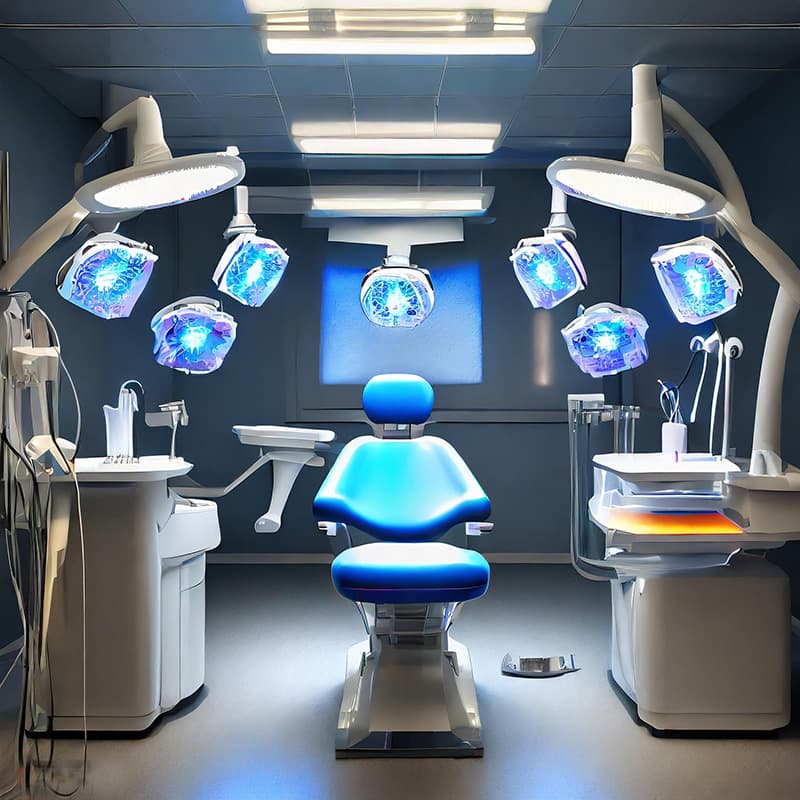
For example, Anye Dental's AY-215A1 Implant Dental Unit comes with detailed maintenance protocols tailored to its design. These instructions outline the ideal cleaning methods, products, and frequencies, ensuring long-term use without compromising the chair's integrity.
Always refer to the manufacturer's manual to avoid using harsh chemicals that could degrade materials or void your warranty.
Step 2: Use Disposable Barriers for Protection
The CDC and dental chair manufacturers recommend using impervious, disposable barriers on chair surfaces. These barriers should be replaced between patients to prevent cross-contamination and protect the chair’s finish. If a barrier is compromised or visible contamination occurs, immediately apply a hospital-grade disinfectant to ensure safety.
Anye Dental’s AY-215B5 Disinfection Dental Unit is designed with easy-to-clean surfaces and comes equipped with features to make disinfection quicker and more efficient. Regular use of disposable barriers will prevent contamination between patients and reduce the need for frequent heavy cleaning.
Step 3: Implement a Two-Step Cleaning Process
To thoroughly disinfect dental chairs, adopt the two-step cleaning process:
- Remove visible debris: Wipe down the chair with a damp cloth to remove any visible dirt or debris.
- Apply an EPA-registered disinfectant: Use a hospital-grade disinfectant to kill bacteria, viruses, and other pathogens that might remain on the surface.
This process ensures that you effectively remove dirt and contaminants before applying a disinfectant, minimizing harmful residue buildup. Always follow the manufacturer’s recommendations for chemical usage to avoid damaging upholstery and finishes.
Step 4: Choose the Right Cleaning Products
Choosing the right cleaning products is crucial for protecting your dental chair and maintaining its durability. Select low-VOC cleaners specifically designed for dental chair maintenance. These are safe for materials like leather and vinyl, which are commonly used in dental equipment.
Avoid harsh chemicals like bleach or citrus-based cleaners, which can degrade materials over time. For example, Anye Dental’s AY-215C5 Implant Dental Unit is compatible with gentle disinfectants, ensuring hygiene without compromising the chair's upholstery.
Step 5: Regular Maintenance and Inspections
To ensure the long-term health of your dental chairs, perform routine inspections and maintenance. Clean the chair at least once daily to prevent harmful residue buildup. This regular cleaning will help extend the chair’s lifespan and keep it functioning optimally.
Additionally, check for any signs of wear and tear on the components. For example, Anye Dental’s AY-215E1 Rehabilitation Dental Unit features durable parts that simplify maintenance, ensuring easy upkeep and a longer lifespan for your equipment.
Step 6: Train Staff on Proper Disinfection Protocols
Ensure that all staff members are well-trained in proper disinfection protocols. Consistent adherence to these guidelines will enhance both patient safety and equipment longevity. This should include cleaning procedures, product knowledge, and the importance of regular maintenance.
For more tips on maintaining dental equipment, explore our comprehensive Dental Chair Maintenance Guide.
By following these steps, dental professionals can maintain a clean, safe, and durable dental chair, ensuring both compliance with industry standards and the creation of a hygienic environment for patients.
Which Disinfectants Are Best to Use for Dental Chairs?
Maintaining a sterile environment in your dental practice is essential for both patient safety and equipment longevity. Choosing the right disinfectants ensures effective pathogen elimination without damaging surfaces.
Here are some of the best disinfectants for dental chairs:
Top Disinfectants for Dental Chairs
-
Quaternary Ammonium Compounds (QUATS)
- QUATS are highly effective against a wide range of bacteria and viruses. They are also gentle on dental chair surfaces, making them an ideal choice for daily use.
-
High-Dilution Water-Based Phenolic Compounds
- These disinfectants provide strong antimicrobial properties while being safe for various dental chair materials. They are non-corrosive, making them a reliable choice for dental practices.
-
QUATS with Less Than 25% Alcohol by Volume
- Combining QUATS with low alcohol content ensures effective disinfection without damaging the chair's upholstery or finishes. This option balances hygiene with equipment care.
Disinfectants to Avoid on Dental Chairs
Certain chemicals can harm dental chair surfaces, so avoid the following:
-
Ethyl or Isopropyl Alcohol (Greater Than 25% by Volume)
- High alcohol concentrations can degrade materials over time, leading to premature wear and tear.
-
Hydrogen Peroxide
- While effective in some settings, hydrogen peroxide is too harsh for delicate dental chair surfaces and can cause discoloration.
-
Chlorine Compounds (e.g., Sodium Hypochlorite)
- These can cause discoloration and deterioration of materials.
-
Strong Phenols or Phenol-Alcohol Combinations
- These chemicals can cause irreversible damage to upholstery and finishes.
Always verify the product labels and adhere to manufacturer guidelines to avoid potential damage and to ensure compatibility with your equipment.
Safety Tips for Disinfecting Dental Chairs
Proper safety protocols are crucial when cleaning dental equipment. Here are some essential tips:
- Wear appropriate PPE: Ensure staff wear gloves, gowns, masks, and face shields to protect themselves from chemicals and contaminants.
- Test disinfectants: Always test cleaning products on a small, inconspicuous area to ensure they do not cause discoloration or damage.
- Use recommended cleaning solutions: Stick to manufacturer-approved disinfectants to avoid voiding warranties or damaging the equipment.
Daily Cleaning Best Practices
To keep your dental chairs in top condition, implement the following best practices:
- Focus on high-touch areas: Clean armrests, control panels, and other frequently touched surfaces after each patient.
- Use EPA-registered disinfectants: Ensure that the disinfectants are approved for use on dental chair materials.
- Adhere to contact times: Follow the manufacturer’s recommended contact times for optimal disinfection.
- Apply surface barriers: Use impervious barriers between patients to reduce contamination risks.
Why Choose Anye Dental for Your Disinfection Needs?
At Anye Dental, we specialize in high-quality dental chairs designed to meet the highest standards of hygiene and durability. Our recommended disinfectants are specifically formulated to protect your investment while ensuring patient safety. Trust us to provide solutions that keep your practice running smoothly and maintain the highest standards of care.
Explore our Dental Chair Buying Guide for more tips and information.
Conclusion
Keeping your dental chair clean and disinfected is more than just a routine—it’s a commitment to patient safety and equipment longevity. Proper disinfection can prevent 90% of cross-contamination in dental settings. By following the steps outlined in this guide—daily cleaning with EPA-registered disinfectants, using barrier protection, and incorporating advanced techniques like UV-C light disinfection—you can maintain a hygienic environment that protects both patients and staff.
At Anye Dental, we understand the challenges of maintaining a sterile practice. That’s why we offer state-of-the-art dental chairs designed with hygiene in mind, such as our AY-215A1 Implant Dental Unit and AY-215B5 Disinfection Dental Unit. These products are built to withstand rigorous cleaning schedules while ensuring durability and patient comfort.
Ready to take your practice to the next level? Explore our range of innovative dental solutions and discover how we can help you achieve the highest standards of care. Your journey to a safer, more efficient practice starts here—let Anye Dental be your partner in excellence!
For more insights on maintaining your dental equipment, check out our How to Maintain Your Dental Chair for Longevity and Performance.

